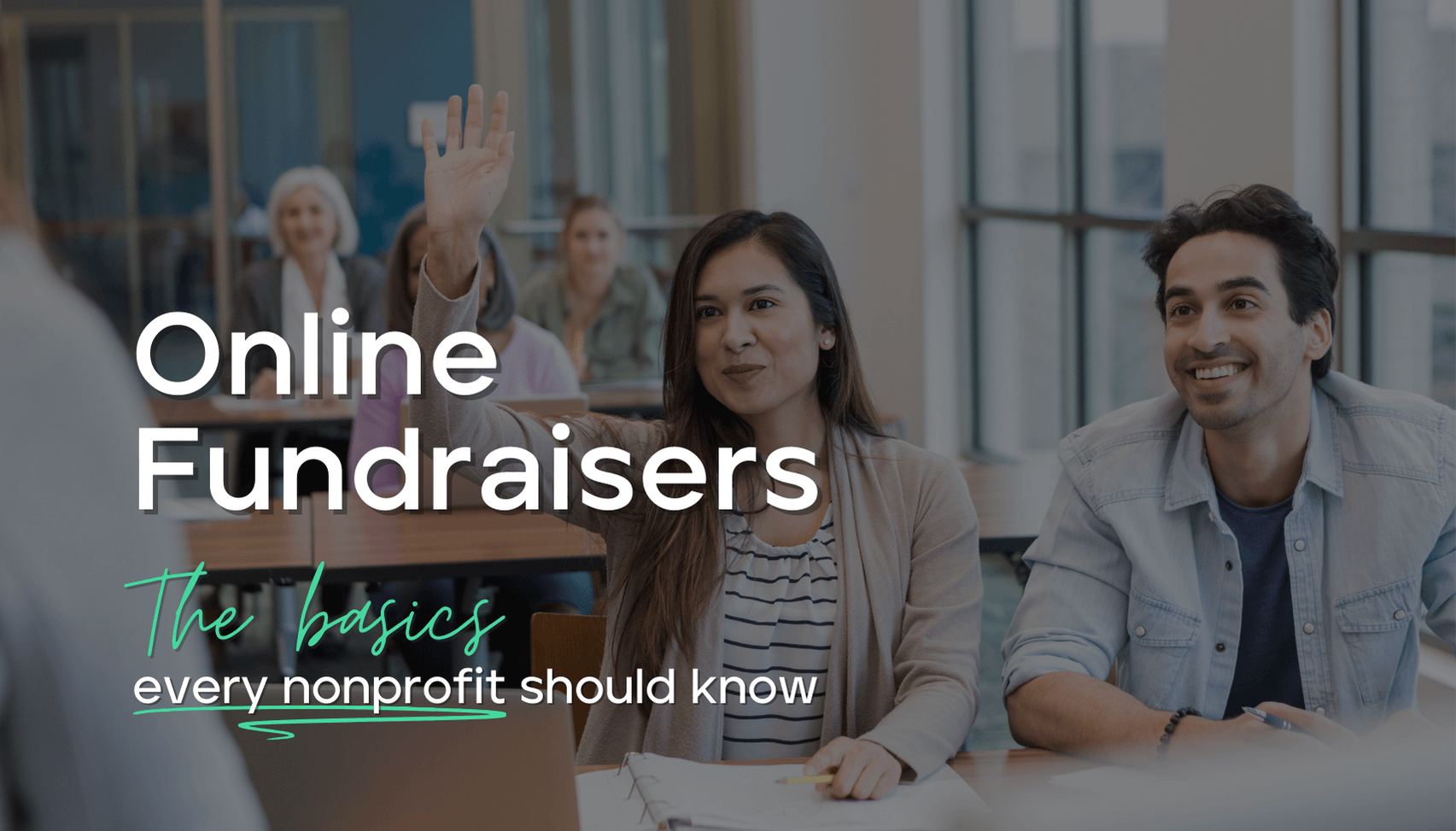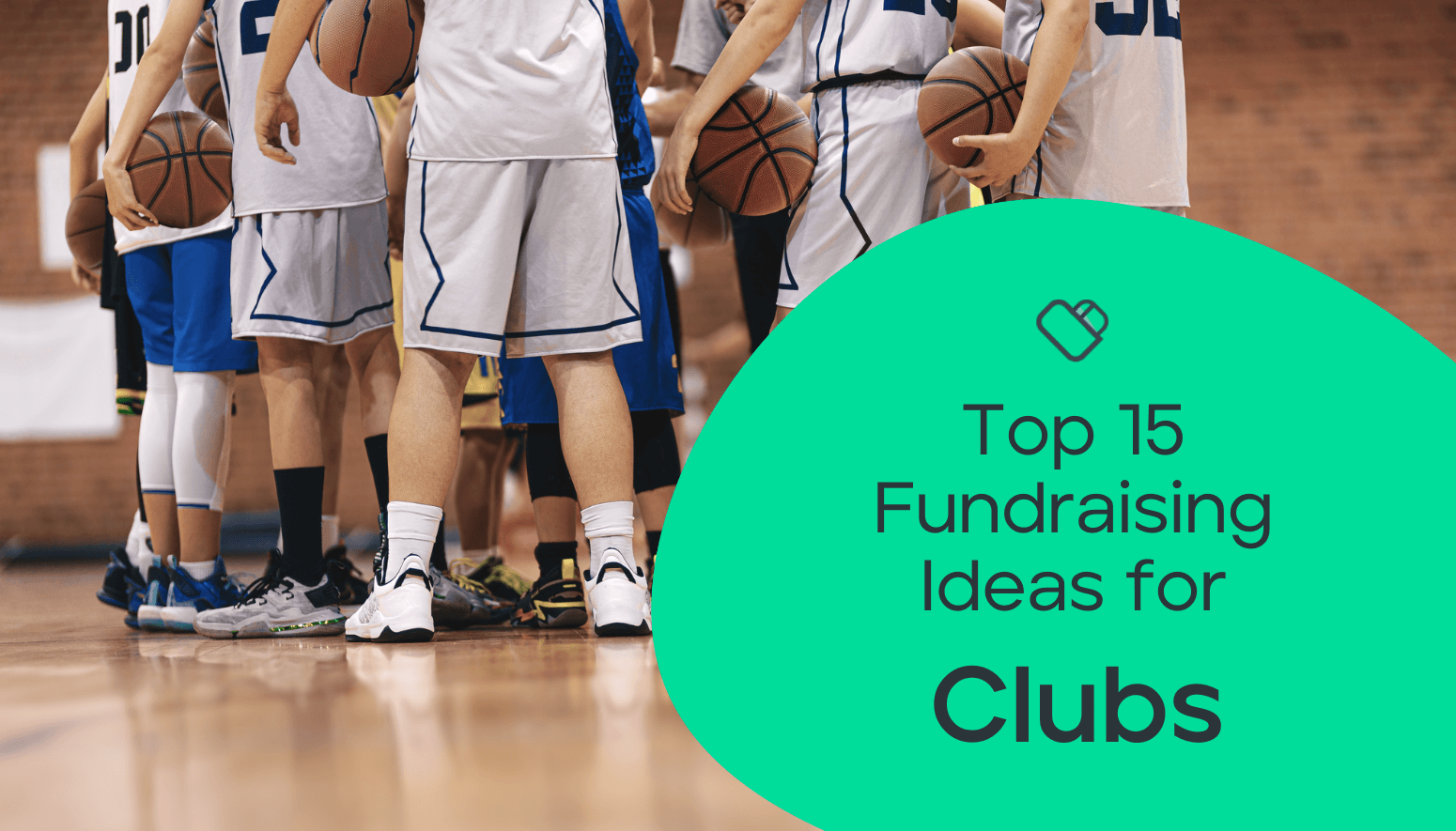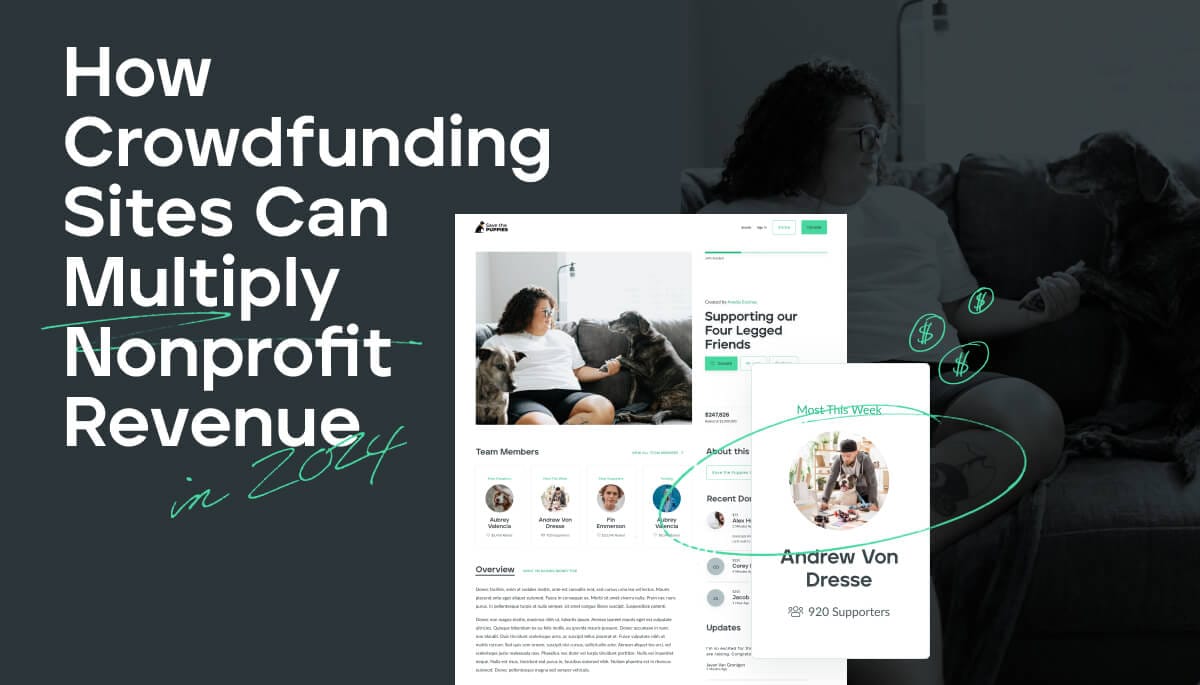Peer-to-Peer Fundraising: The Ultimate Guide
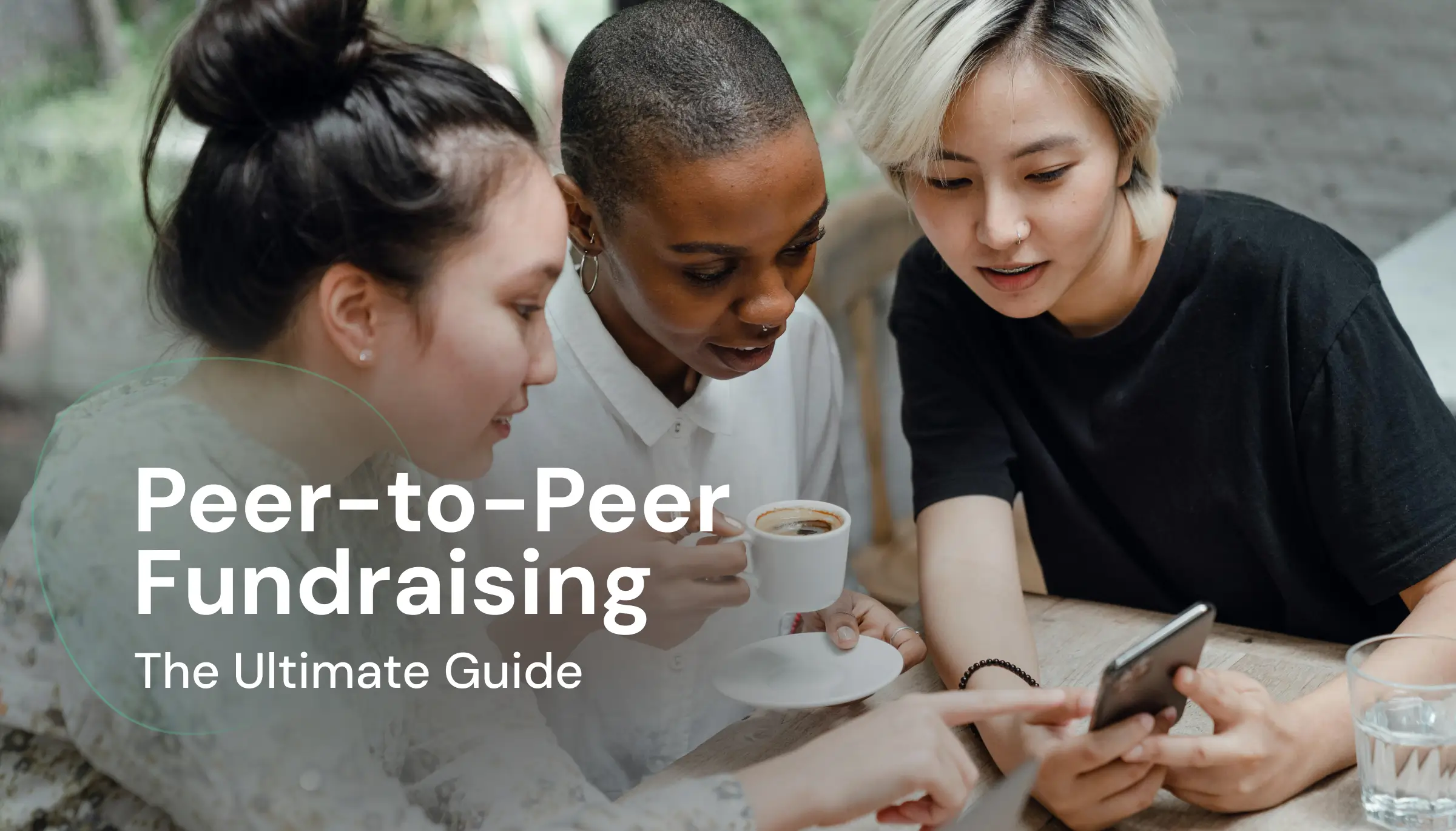
Peer-to-peer fundraising is a powerful strategy that remains as relevant as ever in 2025. In fact, with small nonprofit teams under increasing pressure to do more with less, peer-driven campaigns have become a go-to method for expanding reach without straining budgets. By empowering your supporters to fundraise on your behalf, you can tap into personal networks and raise more money with minimal overhead. As we head into 2026, new technologies and trends, from AI-powered personalization to integrated campaign marketplaces, are reshaping how organizations run peer-to-peer fundraisers. This updated guide will walk you through the essentials of peer-to-peer fundraising and highlight the latest best practices, so your team can stay ahead of the curve and maximize results.

Peer-to-Peer Fundraising: Frequently Asked Questions
Before diving into strategy, it’s worth covering the basics of peer-to-peer (P2P) fundraising – what it is, how it works, and why it’s such a game-changer for nonprofits.
What is Peer-to-Peer Fundraising?
Peer-to-peer fundraising is an online fundraising strategy that empowers individuals to raise money on behalf of a cause. In a P2P campaign, your organization’s supporters become volunteer fundraisers. Each fundraiser creates a personal fundraising page (branded to your nonprofit) and shares it with their friends, family, and colleagues via social media, email, and other channels. Essentially, it’s a way to crowdsource fundraising by leveraging the passion and personal networks of your supporters.
This strategy is sometimes called social fundraising or personal fundraising. It’s commonly used for campaigns like charity runs, walkathons, or any initiative where supporters can rally others to donate. By tapping into the power of social connections, peer-to-peer fundraising helps nonprofits reach far beyond their usual donor base – which is invaluable for smaller organizations that need to expand awareness on a tight budget.
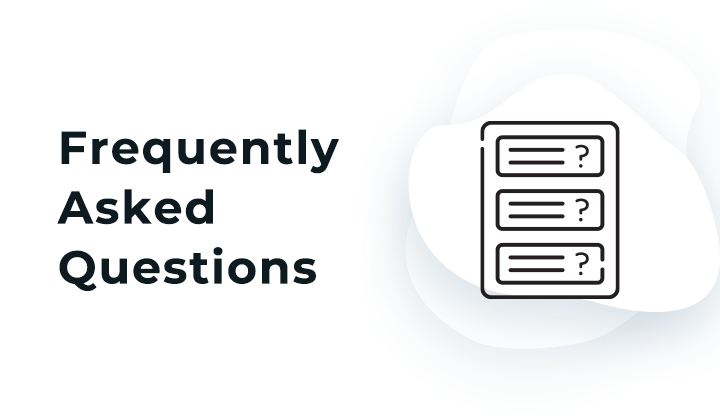
How Does Peer-to-Peer Fundraising Work?
To successfully pull off a peer-to-peer campaign, you’ll need to follow a series of key steps. Here’s how a typical P2P fundraiser works:
- Set a clear fundraising goal: Decide on a realistic revenue target for the campaign. Use your past fundraising data as a guide and aim slightly higher than your last successful campaign. Keep it attainable – an overly ambitious goal can demotivate your team if you fall short.
- Choose the right P2P fundraising platform: Select a robust software platform with features that fit your needs and budget. Look for tools that make it easy to create campaign pages, manage donor data, and integrate with your other systems. In 2025, many nonprofits also consider whether a platform offers AI-driven insights or personalization features. (We’ll discuss software in detail later.)
- Design your main campaign page: Create a central campaign hub on your platform that tells your story. This page serves as the template for your supporters’ individual fundraising pages, ensuring consistent branding across the campaign. Include your nonprofit’s mission, the purpose of the fundraiser, and a compelling call to action. Don’t forget visuals and a progress thermometer to show momentum!
- Recruit your fundraising team: You can’t run a peer-to-peer fundraiser without people to champion your cause. Start by recruiting from your network of loyal supporters – passionate volunteers, recurring donors, board members, staff, and even corporate partners. Each participant will set up their personal fundraising page (using the template you designed) and customize it with their story and connection to your mission. In recent years, nonprofits have increasingly engaged board members in P2P campaigns, encouraging them to lead by example and leverage their professional networks. Some organizations also invite local businesses or corporate teams to join in friendly fundraising competitions, widening the pool of potential donors.
- Promote the campaign far and wide: Marketing is truly a team effort in peer-to-peer fundraising. First, get the word out through your nonprofit’s channels – email announcements, social media posts, newsletters, etc. Encourage your volunteer fundraisers to actively share their personal pages on Facebook, Instagram, LinkedIn, and beyond. Provide them with template outreach messages and graphics (more on that in Best Practices) to make sharing easy. Additionally, keep the campaign momentum going by posting regular updates and celebratory milestones. The more excitement you build, the more people will be inspired to donate.
- Support and steward the fundraisers: Throughout the campaign, keep in close touch with your fundraisers. Answer their questions, cheer them on, and provide coaching if needed. Treat them as partners on your fundraising team. Nonprofits that excel at P2P often assign a staff member as a campaign coordinator to send tips, monitor progress, and motivate the troops. This kind of support can make a huge difference – one industry report found that while P2P participation is growing, revenue per participant can drop without the right support, meaning many fundraisers stall out without guidance. By investing time in your volunteer fundraisers’ success, you’ll help them raise more and feel connected to the cause.
- Close out and celebrate: At the end of the campaign, announce your results and celebrate your fundraisers. Thank each participant (and their donors) for their contributions. Nonprofits often send personal thank-you notes, shout-outs on social media, or even small tokens of appreciation. Recognizing your fundraisers’ hard work not only honors them, but also sets the stage for them to help again in the future.
By following these steps, you’ll set a strong foundation for your peer-to-peer fundraiser. Cover all your bases – planning, recruitment, promotion, and stewardship – and you’re sure to amp up support and maximize your results. Now, let’s explore
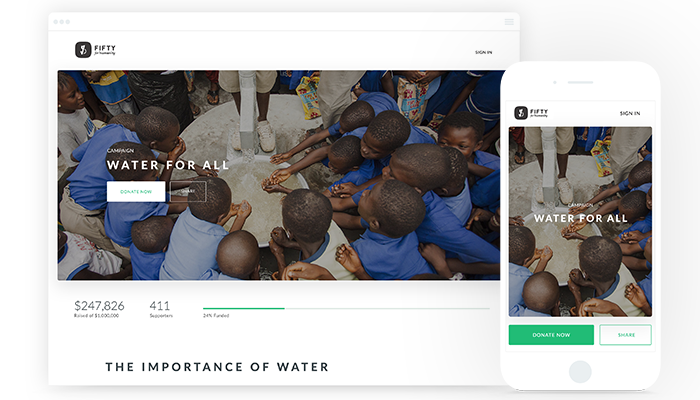
Now, let’s explore why this method works so well.
What Are the Benefits of Peer-to-Peer Fundraising?
Peer-to-peer fundraising has exploded in popularity because it offers several key benefits that traditional fundraising campaigns often can’t match:
- Exponentially expands your reach: P2P turns your supporters into ambassadors who introduce your cause to new audiences. Each fundraiser shares your mission with their friends, family, and colleagues – people who may have never heard of your nonprofit before. This social proof is powerful; individuals are much more likely to engage and donate when asked by someone they trust. By effectively conveying your story on the campaign pages, you can resonate with these new donors and grow your supporter base.
- Builds community and deeper engagement: When supporters fundraise on your behalf, they become more invested in your success. By taking on an active role, fundraisers often feel a sense of responsibility and closer connection to your work. This can strengthen their bond with your organization. Meanwhile, donors who give to support their friend’s campaign often feel involved in a peer community. This dynamic fosters a network of champions around your cause, leading to higher retention. In short, everyone feels like part of the team.
- Raises more money (often in smaller gifts): People rally around personal appeals. A peer-to-peer approach can inspire donations that you might not capture through general appeals. Many donors will gladly chip in $20, $50, or $100 to support a friend’s fundraiser even if they wouldn’t respond to a direct ask from your nonprofit. Those smaller gifts add up. In fact, most peer-to-peer gifts are modest, but collectively they drive significant revenue. One recent benchmark study noted that 80% of P2P fundraising revenue comes from gifts over $50 (while gifts over $250 are rare). P2P is a great way to harness lots of micro-donations for big impact. It’s also an effective donor acquisition tool – some of those new contributors will convert into regular donors for your organization.
- Inspires trust through authentic storytelling: Peer fundraising adds a personal touch to appeals. When a donor gives to their friend’s campaign, it’s not just about your nonprofit – it’s also about supporting someone they know. This inherently builds trust. The friend is effectively vouching for your cause. In today’s philanthropy landscape, trust and transparency are paramount. Donors want to see the impact of their gifts and feel confident their money is making a difference. (In fact, 97% of donors cite the impact of their gift as their main reason for giving.) Peer fundraisers can speak authentically about why the cause matters, share personal anecdotes, and later show outcomes, which reinforces donor confidence in giving.
These are just a few of the reasons peer-to-peer campaigns often outperform traditional fundraisers. By leveraging social networks and personal connections, P2P fundraising unlocks new support, builds enthusiasm, and amplifies your mission’s reach – all without a big marketing spend. It’s a high-return, community-driven approach perfect for small teams. As one nonprofit professional puts it, “Peer-to-peer fundraising is a more successful method to pursue than traditional campaigns for several reasons” – it’s engaging, expansive, and empowering for everyone involved.
How Do I Encourage Participation in my Peer-to-Peer Fundraiser?
One of the biggest keys to P2P success is getting a motivated team of volunteer fundraisers and keeping them energized. Without enthusiastic participants, even the best campaign plan will fall flat. So how can you encourage people to not only join your peer-to-peer fundraiser but also actively fundraise? Here are some proven tips:
1. Recruit strategically and set expectations.
When inviting supporters to fundraise, be clear about what’s involved and how it helps your mission. Aim to recruit individuals who are passionate about your cause and willing to reach out to their networks. Often, your best bets are dedicated volunteers, long-time donors, board members, and staff – people already deeply invested in your work. Don’t shy away from asking; many will step up if you ask them the right way and explain the impact they can have. Once they’re on board, provide a straightforward onboarding that covers how to set up their page, fundraising tips, and the campaign timeline. Setting individual goals for each fundraiser (even just a suggested goal) can also motivate them with a target to hit.
2. Make it fun with gamification and friendly competition.
A little friendly competition can ignite your fundraisers’ drive. Implement gamification elements such as leaderboards, badges, or contests. For example, display a leaderboard on your campaign site to showcase top fundraisers and spark a race for the #1 spot. You could offer a small prize or public recognition for the first person to reach a certain milestone or the team that raises the most. Additionally, use a fundraising thermometer to visualize progress – as it inches toward the goal, everyone gets excited to push it over the top. Gamification taps into people’s competitive nature and makes fundraising feel like a collective game to win, rather than a chore.
3. Provide resources and ready-made content.
Set your volunteers up for success by supplying marketing materials they can use to promote the campaign. Create a simple toolkit with things like social media graphics, email templates, and facts about your cause. For instance, draft a sample fundraising email that your supporters can personalize and send to their contacts. Design a few eye-catching images optimized for Facebook, Instagram, or LinkedIn that they can post with a donation link.
. The easier you make it for fundraisers to ask for support, the more they will do it. In 2025, some nonprofits even use AI tools to help generate personalized outreach messages or social posts for each fundraiser – but even without AI, a basic toolkit of templates will greatly boost participation. (See the Best Practices section for more on crafting these materials.)
4. Foster a team spirit and keep communicating.
Running a peer-to-peer campaign is a team effort, and people are more likely to stay involved if they feel part of a community. Encourage your fundraisers to share updates on their progress and cheer each other on. You can facilitate this by having a private Facebook Group or WhatsApp chat for participants to swap tips and celebrate wins. As the organizer, send regular updates to all fundraisers (e.g. a weekly email with total raised so far, a “Fundraiser of the Week” spotlight, and a quick tip). Also, be responsive – answer questions quickly and offer encouragement individually. Recognize every effort, not just the top performers. A shout-out on social media or a personal thank-you call to a fundraiser who secured a few donations can go a long way. When participants feel appreciated and supported, they stay motivated.
5. Pair the campaign with an engaging event or theme.
Giving your peer-to-peer fundraiser a thematic hook can boost excitement. Many nonprofits tie P2P campaigns to events like charity runs, walks, or “thons” (more on ideas below). Even if it’s not an in-person event, you could structure it as a challenge – for example, a “10,000 Steps Challenge” or a month-long initiative with a creative goal. An event or theme gives people something to rally around and talk about. It also provides a natural deadline and finale to work toward. If you do host an event (live or virtual) at the culmination, that can serve as a celebration for all participants, which further incentivizes them to stay active. In short: make it fun and rewarding to be part of your campaign.
By implementing these tactics – clear goals, gamification, resources, community, and thematic fun – you’ll inspire your supporters to join in and keep fundraising enthusiastically. Remember, your volunteer fundraisers are the engine of peer-to-peer success. Treat them like the VIPs they are: equip them with tools, encourage them relentlessly, and celebrate their contributions. If you do that, you’ll build a loyal cadre of fundraisers who love helping your cause, now and for years to come.
(Pro tip: Don’t forget to thank your fundraisers frequently. Public recognition on social media or a personal note of gratitude can significantly boost morale. And at campaign’s end, consider hosting a small thank-you party or recognition event – even a virtual one. People will remember how you made them feel, and gratitude is the best motivator for future participation.)

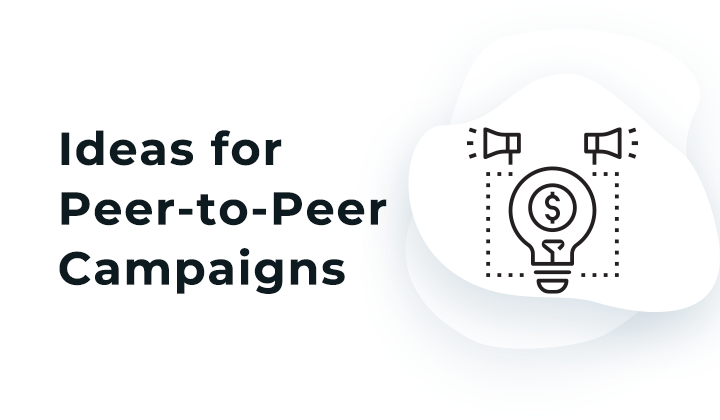
Peer-to-Peer Fundraising Ideas
Ready to launch your next peer-to-peer campaign but not sure what form it should take? The beauty of P2P fundraising is its versatility – you can apply it to all kinds of creative events and challenges. The key is to pick an activity that excites your community and aligns with your mission (or at least with your supporters’ interests). Below are some popular and innovative peer-to-peer fundraising ideas to spark inspiration:
5K Races (or Walks, Runs, Rides)
Organizing a charity 5K run/walk is a classic peer-to-peer fundraiser – and for good reason. These events naturally lend themselves to personal fundraising pages, as participants gather pledges and donations leading up to race day. The energetic atmosphere of a race gets everyone motivated to support the cause while getting some exercise. To put a fresh spin on it, consider choosing a unique theme for your race to generate buzz (e.g. a superhero costume run, a color run, or a glow-in-the-dark night run). Participants create fundraising pages, share them on social media, and ask their networks to sponsor their run. You can also boost revenue by selling event T-shirts or merchandise and securing local business sponsors for the race.
(Tip: If an in-person 5K isn’t feasible for your group – due to budget, timing, or public health – a virtual 5K is a great alternative. Participants can run or walk on their own time (maybe over a weekend) and log their distance. They still fundraise via personal pages, and you can encourage friendly competition by tracking results online. Virtual races are more accessible to supporters anywhere and can actually broaden your reach beyond one locale.)
Viral Video Challenges
We all remember the ALS Ice Bucket Challenge, which swept the internet and raised millions for charity. That’s the power of a viral peer-to-peer challenge. The idea is to create a fun, engaging challenge that supporters can do at home, film themselves, and share – all while encouraging donations. To execute this, come up with a unique challenge tied to your cause or mission. It could be physically amusing (like getting dunked with ice water, doing pushups, a dance challenge, etc.) or something symbolic. The critical part: participants complete the challenge on video, post it on their social media with a link to your donation page, and nominate a few friends to do the same. The chain reaction of nominations is what makes it spread virally. If the challenge resonates and is easy to do, you could see your message reach thousands of new people. When planning a viral challenge, keep safety in mind (no dangerous stunts) and ensure it’s simple enough that anyone can participate. With a bit of creativity, a viral P2P campaign can massively boost awareness and funds quickly.
“Thon”-Style Endurance Events
Thon-style peer-to-peer events (think walkathons, dance-a-thons, read-a-thons, etc.) are perennial favorites for schools, clubs, and nonprofits. Participants collect pledged donations for completing some activity for as long or as much as they can – the longer they go, the more they raise. For example, in a walkathon, donors might pledge $5 per lap or mile, and participants walk as much as possible in a day. In a dance-a-thon, people might pledge per hour of dancing. These events create a fun, community-centric vibe and motivate participants to push themselves. Consider what activity fits your cause or audience: a read-a-thon for a literacy nonprofit, a bowl-a-thon for a mentoring program, a bike-a-thon for a health cause – the possibilities are endless. Peer-to-peer pages come into play as participants collect those pledges by sharing their page link with friends and family. After the event, donors fulfill their pledges based on the participant’s achievement. It’s both engaging and effective: participants enjoy the friendly challenge, and donors love sponsoring their efforts for a good cause.
Giving Day Campaigns
Capitalizing on a sense of urgency can supercharge a peer-to-peer fundraiser. Giving days – 24-hour fundraising blitzes – are a perfect example. The most famous is #GivingTuesday, which occurs each year right after Thanksgiving. But you can also create your own giving day around a date significant to your organization. The idea is to concentrate your campaign into a single day or limited timeframe and challenge supporters to raise as much as possible before the clock runs out. For a P2P twist, recruit fundraisers or teams in advance and have them blast out appeals throughout that day on their personal networks. The time-bound competition often spurs people into action: when donors know “we only have one day to hit this goal”, they’re more likely to give now rather than later. To bolster a giving day peer campaign, you might incorporate matching gift hours, social media “thunderclap” posts by all fundraisers at the same time, or even a livestream event to keep excitement high. Additionally, some nonprofits set up a fundraising web store selling small goodies (shirts, cookies, etc.) during the giving day to bring in extra donations for those who want something in return. Overall, giving days create a fun, intense burst of fundraising energy – perfect for engaging your base and their friends in a short-term push.
10,000 Steps (or Fitness) Challenge
Health and wellness challenges make great peer-to-peer fundraisers because they encourage people to achieve personal goals and raise money. A popular format is the 10,000 Steps Challenge: challenge your supporters to walk at least 10,000 steps each day for a set period (say, one month). Participants use fitness trackers or smartphone apps to log steps. For the fundraising piece, donors can pledge a certain amount per day that the participant hits 10k, or simply give lump-sum donations in honor of the effort. Every participant sets up a fundraising page to track their progress and collect gifts. They can post daily updates or screenshots of their step counts to social media, keeping their friends engaged. This concept isn’t limited to walking – you could do a cycling mileage challenge, a read-a-thon (pages read per day), or any activity that suits your cause. The dual focus on personal improvement and supporting a mission can be very motivating. Even supporters who aren’t naturally inclined to ask for donations might jump in for a fitness challenge because it’s a win-win for their health and your nonprofit’s mission.
Board Member or Corporate Fundraising “Challenges”
(New in 2025!) One emerging idea is to specifically engage your board members or corporate partners in a peer-to-peer challenge. For example, a nonprofit can launch a “Board Challenge” campaign where each board member commits to creating a fundraising page and competing to bring in the most donations. This leverages the influence and networks of your leadership. In fact, board members are often expected to assist with fundraising, and giving them a friendly competition is a structured way to do it. Donately’s campaign marketplace even offers a Board Challenge template designed for this purpose, making it easy to set up a board-driven P2P campaign. Similarly, you could invite local businesses to a “Corporate Challenge” – companies or departments compete to raise funds, with maybe a prize or recognition for the top team. These campaigns not only raise money but can also attract new supporters from the networks of your board members or corporate participants. As a bonus, many companies have matching gift programs, so if an employee (or board member) raises funds, their employer might match those donations, doubling the impact. By tapping into board and corporate connections, you add an element of prestige and broader reach to your peer-to-peer efforts.
Feel free to mix and match these ideas or come up with your own twist. No matter which idea you choose, success comes from organized execution and enthusiastic fundraisers. Make sure to create engaging donation pages for your participants, equip everyone with the tools to promote their page, and have all your logistics in place before kickoff. With a bit of creativity, peer-to-peer fundraising can be adapted to almost any event or theme, so let your imagination run wild. The goal is to find a format that excites your supporters and aligns with your cause – when those click, the donations will follow!
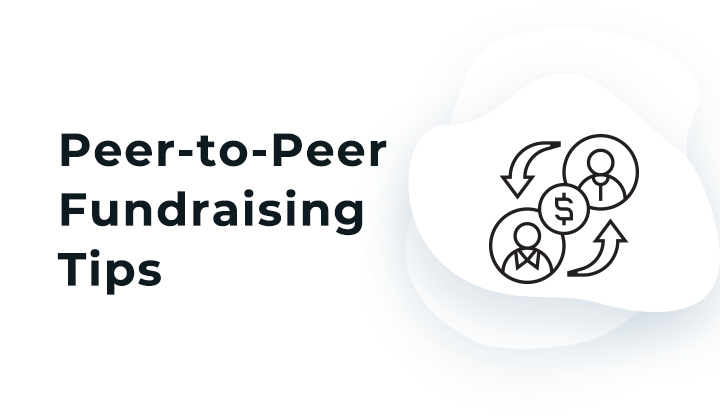
Best Practices for Peer-to-Peer Fundraising
Launching a peer-to-peer campaign is one thing; making it truly successful is another. Below are best practices that savvy nonprofits use to maximize their P2P fundraisers. These tips will help you tell a compelling story, empower your fundraisers, and keep donors engaged from start to finish.
Tell a Story with Compelling Visuals
The most effective peer-to-peer campaigns put storytelling front and center. Remember, people donate because they feel something – a connection, empathy, inspiration. Encourage both your organization and your volunteer fundraisers to tell authentic stories about your mission’s impact. On your main campaign page, share a powerful narrative about why you’re raising money and who it will help. Include heartwarming anecdotes or testimonials that illustrate the difference donors can make. Then, bring it to life with visuals. Photos and videos of real people (or animals, or environments) impacted by your work can evoke an emotional response that words alone cannot. For example, if you’re an animal rescue, show before-and-after photos of a dog you saved. If you’re raising funds for a school program, include a short video of students benefiting.
Likewise, ask your peer fundraisers to personalize their own pages with their stories – why they care about the cause, whom they’re honoring, etc.. Maybe a fundraiser will say, “I’m raising money for Cancer Care in memory of my mom,” or “I support this shelter because I adopted my cat from them.” These personal testimonials resonate strongly with donors who know the fundraiser. By weaving a narrative and using visuals that spark empathy, you forge a deeper connection with potential donors. In 2025, attention spans are short, so a clear, emotional story + compelling image can be the hook that converts a page visitor into a donor. Don’t forget to maintain consistency – ensure your nonprofit’s branding (logos, colors, messaging) is present across all pages so that each personal story still ties back to the main cause.
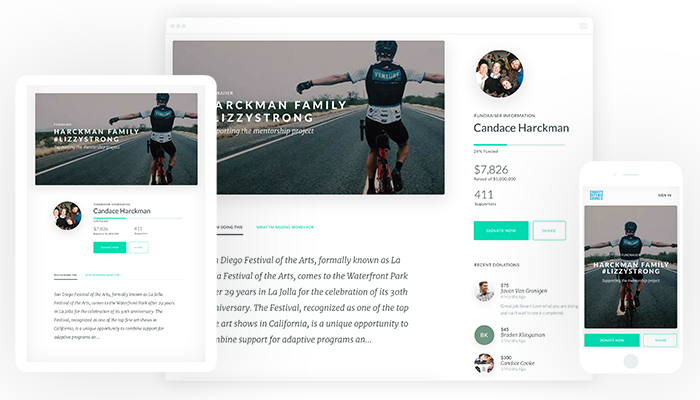
Create a Digital Toolkit for Your Fundraisers
Recruiting peer-to-peer participants is only half the battle; you also need to equip them for success. Providing ready-made marketing materials and guidance will significantly improve the quality and reach of their fundraising efforts. Here’s what a great fundraiser toolkit should include:
- Branded social media graphics: Design a handful of attractive images that fundraisers can post to promote the campaign. These could be banners or square images with your campaign hashtag, a call to action like “Support XYZ Charity,” and maybe a compelling photo. Provide a variety of sizes (Instagram post, Facebook banner, Twitter image, etc.) so they look good on all platforms. Engaging visuals will help their posts stand out in crowded social feeds.
- Email templates: Write a sample outreach email that your fundraisers can customize and send to friends and family. It should briefly explain the campaign, why the fundraiser cares, and include the link to their personal donation page. Also provide a short thank-you email template they can use to thank donors who give.
- Talking points and facts: Give supporters a one-pager or PDF with key facts about your organization and the campaign goals. This helps them answer questions and talk confidently about the cause. Include stats or impact points (e.g. “$100 provides clean water for 3 families for a month”) that they can share with donors to illustrate the difference a gift makes.
- Logos and branding assets: Make your logo and a few approved photos accessible so fundraisers can use them in any custom materials they might create. Having high-resolution logos on hand ensures that any outreach stays on-brand.
- Guidelines and tips: Write up a brief guide with fundraising tips (like those in the previous section). Encourage fundraisers to start by donating to their own page (to show commitment), to share updates regularly, to tag your nonprofit in social posts, etc. If your platform offers any special features (like built-in email or text blasts), explain how to use them.
By arming your team with this toolkit, you remove a lot of friction for would-be fundraisers. They won’t have to design their own graphics or figure out messaging from scratch – you’ve done the heavy lifting so they can hit the ground running. As a result, their outreach will look more professional and compelling, which can mean the difference between reaching your campaign goals or falling short. If you’re short on in-house design capacity, consider outsourcing the graphics creation to a freelancer or using simple design tools to whip up templates. The investment in good collateral will pay off in donations.
(Bonus: Some nonprofits partner with a nonprofit marketing agency or use services like Donately’s Engage packages for this step, getting expert-designed campaign materials that small teams might not have time to create. But even on a shoestring budget, basic branded materials can be made with free tools – it’s well worth the effort.)
Embrace Personalization and Donor Data
In 2025, one of the hottest trends in fundraising is hyper-personalization – tailoring communications to each donor’s interests and behavior. Peer-to-peer campaigns are an excellent arena to apply this, because you have multiple fundraisers each working their personal connections. Encourage your fundraisers to personalize their outreach individually (e.g. a text to a close friend vs. a tweet to their followers). At the campaign management level, use your donor data to inform strategy. Modern P2P platforms like Donately make it easy to track insightful donation data in real time, so you can see which fundraisers are bringing in the most, what average gift sizes are, etc., and adjust tactics accordingly.
Leverage any data you have on past donor interactions. For instance, if certain donors respond better to email than social media, guide fundraisers to prioritize that channel for those folks. If you notice a donor gave because of a specific story or angle, mention that impact in future touches. Some advanced platforms (and AI tools) can even help segment donors and predict which prospects to approach first. In fact, over 71% of nonprofits are using or planning to use AI for fundraising to help with things like donor segmentation and personalized outreach. The takeaway for peer-to-peer: know your audience and personalize the ask as much as possible.
For example, a personal Facebook post from a fundraiser to old college friends might highlight the social aspect (“Let’s rally together like we did in school!”), whereas an email to a potential major donor might focus on impact metrics. Train and encourage your fundraisers to customize their messages for different groups. Remind them to use first names in messages and reference any connection (“As someone who loves the outdoors, you’ll appreciate that this campaign supports clean parks…”). These tailored touches can significantly improve response rates. As one fundraising expert noted, “Personalized, donor-centric fundraising powered by AI and data analytics will be key in 2025... with communication based on donor interests, behaviors, and giving history”. Even if you don’t have fancy AI, the principle stands: use what you know about your donors (or equip your fundraisers to use what they know about their friends) to make each appeal feel personal and relevant. This can dramatically boost engagement and donations.
Promote Across Multiple Channels
“If you build it, they will come” does not apply to fundraising pages. You and your fundraisers have to actively promote the campaign everywhere your audience spends time. The best peer-to-peer campaigns use a multichannel marketing approach – leveraging email, social media, text messaging, and even traditional channels like phone calls or direct mail to spread the word. Why? Because repetition across channels maximizes visibility, and different people prefer different communication methods.
Coordinate with your team of fundraisers to cover all bases:
- Email: Draft compelling emails to announce the campaign launch, provide updates, and make final “last chance” appeals. Supply your fundraisers with email templates they can send to their contacts. Email remains one of the most effective ways to solicit donations directly, especially from older or more traditional donors.
- Social Media: Encourage each fundraiser to share their page on Facebook, Instagram, Twitter/X, LinkedIn – wherever they have an audience. The virality potential is huge (we’ve seen posts go viral within hours). Provide sample posts or graphics to make it easy. Also, use your nonprofit’s social accounts to amplify top fundraisers and show progress. Consistency is key: make sure there’s a unified campaign hashtag or tagline everyone uses for wider reach.
- Text Messaging: In today’s mobile-first world, SMS reminders can be very effective. If your fundraising platform supports text-to-donate or broadcast texts, use it to send quick updates or encouragement (with permission, of course). For example, text your fundraisers mid-campaign: “We’re 70% to goal! Share your page again to help us sprint to the finish! 💪 #YourCampaignName”. Some donors might also appreciate a direct text with a link to give – just be mindful of not over-texting.
- Direct Mail or Flyers: While primarily an online effort, don’t rule out physical outreach especially if your campaign has a local community angle. You might give your fundraisers a printable flyer or postcard to hand out or mail to relatives, neighbors, etc. Old-school letters can still make an impact – one idea is providing a template fundraising letter that fundraisers can personalize and mail to a few close contacts who prefer pen and paper. Include a QR code or easy URL to their online donation page for convenience.
- Word of Mouth: Remind participants to talk about the campaign in their daily lives – at work, church, club meetings, you name it. Often the most genuine asks happen in casual conversation. This costs nothing and can be surprisingly effective, because a passionate in-person ask is hard to ignore. Arm your fundraisers with a quick elevator pitch about the campaign so they feel comfortable bringing it up.
By blanketing multiple channels, you ensure your message gets through. Someone might skip over a Facebook post but notice an email later, or vice versa. Multichannel outreach can increase donation conversion by reinforcing the ask in different contexts. Just be sure the messaging is coordinated – for example, timing your big push emails with social media blasts, and using similar visuals or slogans across channels for brand consistency. The result will be a louder drumbeat that more potential donors hear, which translates to more funds raised.
(Pro tip: Keep communication two-way whenever possible. If you post on social media, engage with comments. If you send an email, encourage recipients to reach out with questions or to share the campaign. Engagement breeds a sense of community around your fundraiser.)
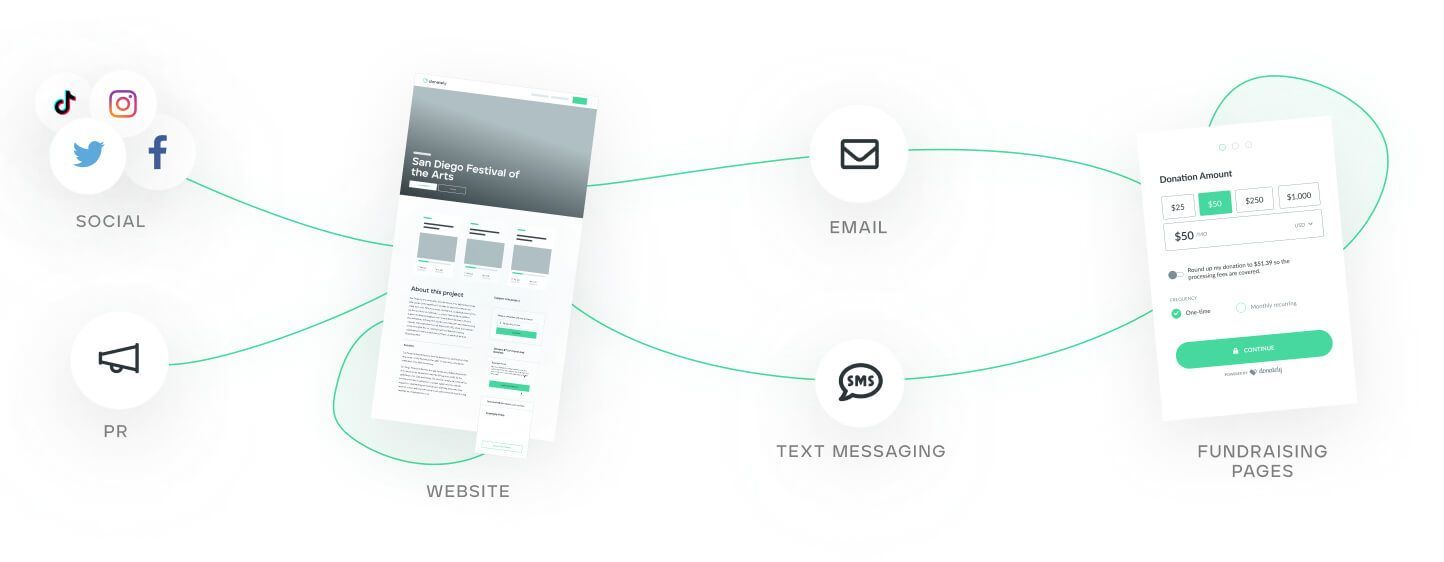
Recognize and Reward Your Fundraisers
Never underestimate the power of recognition. Publicly acknowledging your peer-to-peer fundraisers’ efforts can supercharge their motivation. There are several ways to do this, both during and after the campaign:
- Shout-outs on social media: Highlight individual fundraisers on your nonprofit’s accounts. For example, “Thank you @JaneDoe for raising $500 so far in our campaign – you’re amazing! 💚 #PeerFundraiser”. This not only makes the person feel good, but also can encourage their friends to chip in when they see their pal being celebrated.
- Leaderboards and progress updates: If you have a campaign leaderboard, share the standings periodically (“Our top fundraiser has reached $1,000! Who will catch up?”). For those not in the top tier, find other ways to recognize them. Maybe “Most Creative Campaign Page” award, or weekly spotlights on a few fundraisers regardless of total. The idea is everyone’s contribution matters and is seen.
- Personal thank-yous: Have organizational leaders (like your Executive Director or a board member) send a quick personal thank-you email or call to each fundraiser mid-campaign and/or after the campaign. Even a two-line email acknowledging their work can mean a lot. For top performers or anyone who went above and beyond, a handwritten thank-you card or small gift (nonprofit swag, etc.) is a classy touch.
- Post-campaign celebration: When the campaign concludes, hold a celebration (virtual or in-person) to thank your fundraisers. This could be a simple Zoom party where you announce final totals and applaud their efforts, or a gathering at a local coffee shop or your office if feasible. You can also present fun awards (serious or humorous) – like “Social Media Superstar” for the person who posted most frequently, or “Overachiever Award” for the one who blew past their goal. Acknowledging different types of contributions ensures everyone feels valued, not just the #1 fundraiser.
Recognizing your participants isn’t just about this campaign – it’s about building a lasting relationship. When people feel appreciated, they’re far more likely to fundraise for you again or stay involved in other ways. Some individuals are motivated strongly by recognition; others by the mission itself. By tailoring the thank-you to what each person values (public applause vs. private thanks), you can maximize its impact. For instance, some might love a public shout-out, while others might prefer a one-on-one heartfelt thank you. If you know your fundraisers well, use that insight. The bottom line: make gratitude a core part of your strategy. It costs very little and pays huge dividends in goodwill and future engagement.
(And of course, don’t forget to thank the donors who gave through your fundraisers’ efforts too! While the focus here is on the fundraisers, acknowledging donors – even if just with an automated thank-you email and a tax receipt – is critical for donor retention. Many nonprofits send a follow-up after the campaign, sharing the success (“We raised $X!”) and gratitude to all who gave.)
Promote Corporate Matching Gifts
Did you know that many donors’ gifts could be doubled by their employer? Matching gift programs are a form of corporate philanthropy where companies match donations made by their employees to nonprofits. Yet a huge number of eligible donors have no idea their employer offers this benefit. That’s why promoting matching gifts is a peer-to-peer fundraising best practice – it can significantly amplify your results without asking donors to give more from their own pocket.
How to integrate this into your P2P campaign: - Educate your fundraisers and donors: Early on, mention the concept of matching gifts in your campaign materials. Encourage each fundraiser to remind their supporters: “Did you donate? Check if your employer will match your gift and double your impact!” Many people simply haven’t heard of matching gifts, so a quick explanation and nudge can prompt them to investigate. - Provide a lookup tool: Use a matching gift search tool on your donation pages if possible. Companies like Double the Donation offer widgets where a donor can search their employer name and get info on the matching program. Embedding this in the donation flow or confirmation page is ideal – it catches donors at the right moment. For example, after someone gives, a message might say “Your employer might match your donation! Search here:”. - Communicate the potential: Let supporters know how common matching is and the impact. For instance, it’s persuasive to share that 84% of donors say they’d be more likely to donate if a match is offered. Also mention that matching gifts can effectively double (or even triple) their contribution without additional cost to them. This often excites donors – who wouldn’t want their $50 to become $100 for the cause? - Highlight deadlines or processes: Remind donors that if they do have a matching program, they likely need to submit a request form (often online) to their employer. You might create a simple info sheet or webpage about how to use matching gifts, including any details for popular local employers. Fundraisers can then share that with their networks.
By actively promoting matching opportunities, you’re ensuring no money is left on the table. It’s one of those “low-hanging fruit” strategies that too many campaigns overlook. Even a handful of matched donations can boost your total substantially. For example, if one donor gives $200 and their company matches 1:1, that’s an extra $200 – and possibly a new corporate connection for your nonprofit. Some companies even have special matching programs for employees who serve on nonprofit boards or participate in charity events, meaning they might match a donor and donate based on volunteer hours (double score!). Since corporate giving is on the rise and part of a holistic funding strategy, tapping into it via matching gifts is a smart move for 2025 and beyond.
(Tip: After the campaign, you can follow up with any donors who indicated their gift was match-eligible to ensure they submit the paperwork. Closing the loop can secure those funds that might otherwise be forgotten.)
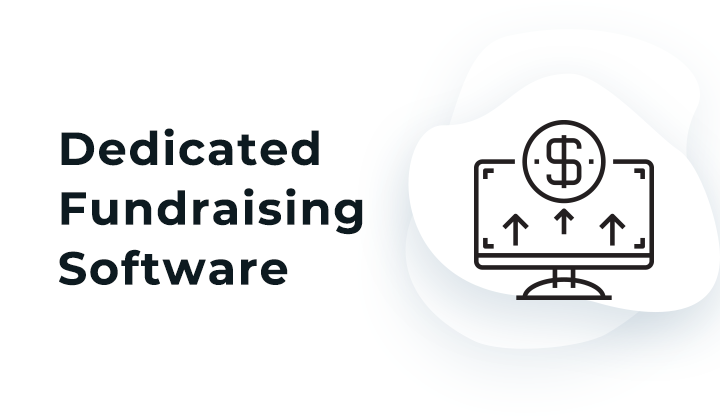
Using Peer-to-Peer Fundraising Software
Running a peer-to-peer campaign is much easier when you have the right tools at your disposal. Fundraising software streamlines the process of setting up campaign pages, processing donations, tracking progress, and more. But not all platforms are created equal, and small nonprofits in particular need solutions that are powerful yet budget-friendly. In this section, we’ll cover what to look for in peer-to-peer fundraising software – including some of the newest features and considerations as of 2025 – and how Donately stacks up in helping small teams succeed.
Key Features: What to Look For
A robust P2P platform should enable you to do several things efficiently:
- Easy Campaign and Page Creation: You should be able to spin up a main campaign page quickly, customize it with your branding (logo, colors, story), and allow supporters to create their personal fundraising pages under it. Look for templates or drag-and-drop page builders that don’t require coding. In 2025, some platforms (like Donately) even offer a campaign marketplace with pre-built templates for different types of fundraisers. This can save you time – for example, Donately’s marketplace includes templates for things like a “Board Challenge” or seasonal campaigns, which you can import and tweak. Quick setup is crucial for small teams.
- Mobile Optimization: Ensure the donation pages are mobile-responsive and look good on phones and tablets. With so much traffic coming from mobile (often 50%+ of web traffic for nonprofits), a clunky mobile experience will cost you donors. Donately’s pages, for instance, are optimized for mobile and even support features like text-to-donate natively. Donors should be able to click a link from a social media post and complete a donation seamlessly on their phone.
- Social Sharing Tools: The platform should make it easy for fundraisers and donors to share the campaign. This means integration of social share buttons on pages, and perhaps the ability for fundraisers to automatically push updates to Facebook or Twitter from their dashboard. Some tools also integrate with Facebook Fundraisers (so a supporter can fundraise on Facebook and have it sync to your campaign total). While not mandatory, social integration is a nice plus to broaden reach.
- Donation Processing and Security: Of course, the platform must handle online donations securely, providing a smooth checkout with multiple payment options (credit card, PayPal, digital wallets, etc.). Look for PCI-compliant processors and the ability to accept recurring gifts if desired. Also, the simpler the checkout, the better – lengthy forms lead to abandonment. This is where specialized fundraising platforms shine: Donately’s forms, for example, convert on average 28% more donors than generic forms, in part due to optimized design. A higher conversion rate means more of those who click “Donate” actually complete the gift.
- Data Tracking and Insights: After and during the campaign, you’ll want robust reporting. Good software will let you see donation details, fundraiser performance, and overall metrics in real time. You should be able to export donor data for your CRM or integrate directly (more on integrations below). Look for features like dashboards that show top fundraisers, total raised, average donation, and maybe even donor geographies or timeline graphs. These insights help you celebrate milestones and plan follow-up. Modern platforms also increasingly incorporate analytics and AI – for example, Fundraise Up (a platform oriented to optimization) touts AI-driven checkout that tests different prompts. However, that comes with complexity and cost. Think about how much control and clarity you need; some orgs prefer transparent tools over black-box AI for critical tasks.
- Customization and Flexibility: Does the platform let you fully brand pages as your own? Can you customize the donation form fields, suggested donation amounts, and autoresponder emails? Full customization ensures a consistent donor experience that feels like your organization, not a third-party. Donately allows full CSS customization on all plans for example, whereas some platforms might restrict branding options on lower tiers. Also consider if you can run unlimited campaigns or pages (some providers charge per campaign or limit how many fundraisers you can have). Small nonprofits benefit from flexibility to experiment without hidden fees.
- Integration with Other Tools: You likely use other systems – a CRM like Salesforce, an email marketing tool like Mailchimp, etc. Your P2P platform should integrate or at least connect via Zapier to those, so that donor and fundraiser data flows where it needs to. For instance, when someone donates, you might want their info to go into Salesforce automatically. Or if you capture email signups, they should flow into your Constant Contact list. Don’t overlook this – manual data entry is a time sink for small teams. Donately has native integrations with many popular tools (Salesforce, HubSpot, Google Analytics, etc.) and thousands more via Zapier, helping create a holistic tech-enabled fundraising environment. This is part of “holistic fundraising” – making your tech stack work together so you gain efficiencies and richer data.
- Support and Training: If you’re a lean team, getting timely support can be a lifesaver when you have questions or issues. Does the platform offer real human support, or just a help article database? Some low-cost platforms rely on community forums or slow email support. Others, like Donately, pride themselves on same-day support from real fundraising experts. If you value having someone to call or chat when you need help strategizing or troubleshooting, factor that in. Also check if they have onboarding assistance, webinars, or consulting services – these can be valuable if you’re new to peer fundraising and want guidance beyond just the software itself.
- Cost and Pricing Model: Last but certainly not least, consider the pricing structure. Fundraising software pricing can range from free (with higher transaction fees) to monthly subscriptions plus fees, to a newer model of licensing. You’ll want to calculate the total cost based on your expected donation volume. Watch out for “free” platforms that make up costs elsewhere – for example, Givebutter is free to use but prompts donors to leave a “tip” to cover platform costs; if the donor doesn’t tip, the nonprofit is charged a percentage. Some orgs find those tip pop-ups undesirable as they may confuse or annoy donors. Other platforms like Fundraise Up have a flat 4% fee on all donations (which can add up for larger campaigns). Transparent, predictable pricing is often better for budgeting. Donately offers tiered plans (including a 0% platform fee option at a monthly rate) and recently introduced a licensing model where you pay a one-time fee to essentially own the platform and then just a tiny maintenance percent. This can save nonprofits a lot in the long run. For example, a nonprofit raising $500,000 a year on Donately’s new licensing model could save over 70% in costs the first year – over $20,000 saved versus typical platform fee structures. That’s money that stays in your mission rather than going to software fees!
In summary, look for a solution that is easy to use, rich in features, well-supported, and cost-effective for your size. The good news is that small and mid-sized nonprofits ($500K–$10M revenue range) now have more options than ever that fit these criteria.
Donately vs. Other Platforms: Standing Out for Small Nonprofits
Since we’re on Donately’s blog, let’s address how Donately compares with some other popular peer-to-peer fundraising platforms, especially the ones often mentioned by growing nonprofits: Givebutter and Fundraise Up. All three are capable tools – but there are some notable differences that can impact a small team:
- Pricing & Fees: Givebutter markets itself as “free,” but as noted, it uses donor tips or else charges 1–5% fees on different features. Fundraise Up charges a flat 4% on donations (and even 5% on cryptocurrency donations) unless you negotiate high-volume rates. Those costs can pile up as you grow. Donately, on the other hand, offers transparent tiered pricing (0%, 2%, or 4% platform fee depending on plan), and no weird tip pop-ups by default. Donately’s approach is to keep it simple and honest – you choose a plan, you know what you’ll pay, and donors won’t be solicited to cover fees unexpectedly. For a nonprofit that wants to maximize each donation’s impact, this transparency matters. (One Donately user noted they “saved around 50% compared to using Classy – more budget for our cause” by switching to Donately.) Additionally, as mentioned, Donately’s new Licensing option can virtually eliminate recurring platform fees, which is a game-changer if you’re aiming to keep overhead low.
- Ease of Use vs. Advanced Features: Fundraise Up is known for cutting-edge optimization features (like AI-driven donation prompts and A/B testing), which can be great for large organizations with the capacity to tweak and monitor those tools. But it also means a steeper learning curve and often the need for technical support or developers to fully utilize the platform. Smaller nonprofits often don’t have a tech team on hand – and frankly may not need ultra-granular optimization. Donately is built for lean teams that want powerful functionality without complexity. It’s intuitive out-of-the-box, so you can launch campaigns in minutes without coding or special expertise. Givebutter falls somewhere in between, offering a lot of features but sometimes requiring upgrades (Givebutter “Plus” package) for things like advanced analytics. The bottom line: if you prefer a straightforward platform that still does everything critical (custom pages, recurring donations, integrations, etc.) without a heavy lift, Donately is designed for that ethos of “full control and fast setup” for growing teams.
- Support & Partnership: One major differentiator is the level of support and strategic help. Givebutter provides 24/7 chat/email support (even to free users), which is commendable, but beyond basic troubleshooting, you’re largely on your own for strategy. Fundraise Up has support too, but their more in-depth onboarding and success resources are geared toward larger orgs (enterprise tier clients). Donately prides itself on offering real human support for all plans, often with same-day responses and even fundraising advice included. Moreover, Donately positions itself not just as a software vendor but a partner in your growth. For example, Donately offers Fundraising Services packages where their team can help manage your campaign, create assets, and coach you – essentially acting as an extension of your staff. Neither Givebutter nor Fundraise Up provides that level of hands-on service; they are purely SaaS solutions. If you value having a partner who understands fundraising (not just tech support), Donately stands out. One of our favorite quotes from a Donately user: “Actual humans who know fundraising, not chatbots or paywalled service tiers” – that sums up the support ethos.
- Customization & Ecosystem: All three platforms allow custom-branded donation pages, but Donately gives full customization on all plans (including embedding forms on your own website easily). It also has an expanding ecosystem with things like the Donately Marketplace (templates and widgets), and integrations with a host of other tools, making it more of a holistic solution as your needs evolve. For instance, if you start needing a CRM like HubSpot or want to connect to marketing automation, those native connections are ready to go. This can save time and money versus a platform that locks you into their all-in-one system. Givebutter and Fundraise Up both integrate with some tools as well, but always check if your specific CRM or email platform is supported natively or via Zapier.
To be clear, the “best” choice can vary by organization. If you’re a very tech-savvy team that loves experimenting and you have the budget, you might appreciate Fundraise Up’s advanced features (despite its higher cost) or Givebutter’s all-in-one suite. However, for small to mid-sized nonprofits that want to launch peer-to-peer campaigns quickly, have predictable costs, and maybe get some expert guidance along the way, Donately is a compelling choice. It was literally built for lean teams that want flexibility, not complexity. It’s worth noting that Donately’s P2P pages boast a high donor conversion rate (one report cited 14% conversion vs. the typical 1–2% on general forms), indicating the platform’s focus on donor-friendly design pays off.
In the end, whichever tool you choose, ensure it aligns with your team’s capacity and goals. The software should empower you, not overwhelm you. As one nonprofit leader put it, “Run smart, scalable campaigns with minimal overhead” – that’s the sweet spot to aim for.
Maximizing Your Software for Success
Once you have your peer-to-peer platform in place, make sure you leverage its full potential: - Train your team and fundraisers on how to use the tools (setting up pages, sharing links, tracking donations). A quick Zoom orientation can help less tech-savvy participants. - Use the data it provides. Check the dashboard frequently to see how you’re pacing toward the goal. Identify any lagging fundraisers and reach out to assist them. Celebrate milestones (the software will tell you when you hit 50%, etc. – share that news!). - Customize communications like automated thank-you emails to donors. Personalize those with merge fields for donor name, fundraiser name, and a heartfelt thank you message. These little touches reassure donors that their gift was received and appreciated, and they reinforce your brand’s voice. - Integrate with your CRM if you have one, so that after the campaign you have all new donor information in your database for future engagement. If you don’t have a CRM, at least export the donor list to a spreadsheet so you can do a follow-up thank-you or include them in your newsletter. Peer-to-peer events often bring in first-time donors, so have a plan to cultivate those folks going forward. - Experiment and iterate. Most platforms will let you run unlimited campaigns or test different approaches. Maybe try a small pilot P2P campaign first to get the hang of it, then go bigger. Use A/B testing features if available (or manually test by giving two fundraisers slightly different messaging and seeing who raises more). Over time, you’ll gather insights on what works best for your audience.
Above all, remember that technology is a means, not an end. The software enables the human connection and generosity at the heart of peer-to-peer fundraising. Keep that human element front and center – use the time saved by software to focus on inspiring and coaching your fundraisers, thanking donors, and sharing impact stories. That’s what will ultimately make your campaign shine.
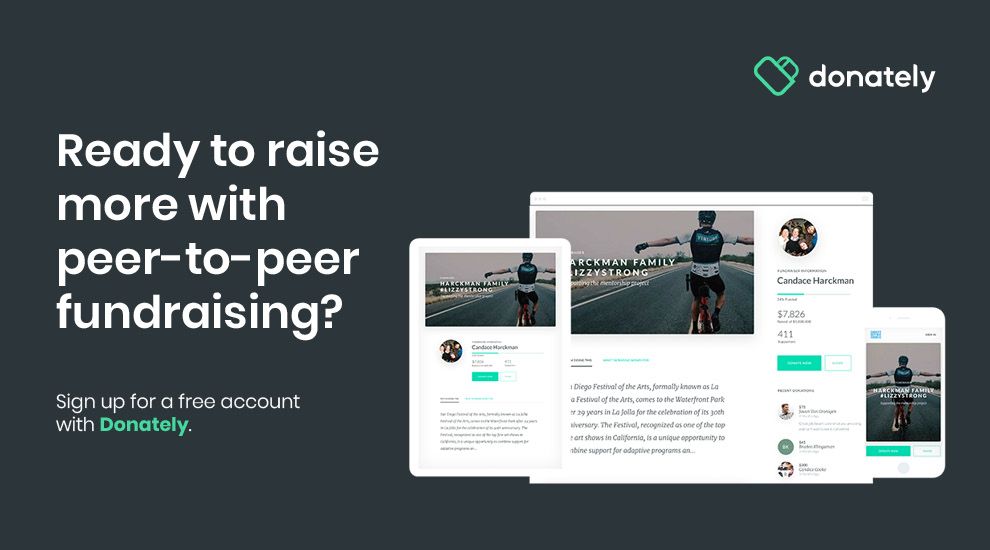
Peer-to-peer fundraising in 2025 is an exciting blend of tried-and-true strategy and new, tech-enabled opportunities. By understanding the fundamentals and embracing trends like personalization, AI insights, and integrated ecosystems, even small nonprofit teams can launch campaigns that punch above their weight. We’ve covered a lot of ground – from FAQs to fresh ideas, best practices, and software tips – and now it’s time to put this knowledge into action. As you plan your next peer-to-peer endeavor, remember to communicate your story passionately, empower your supporters, and make use of the resources at your fingertips (including Donately’s growing toolkit built for teams like yours).
Peer-to-peer fundraising can expand your audience, deepen donor relationships, and raise critical funds for your mission. With the right approach, it’s also incredibly cost-effective – allowing more of each dollar raised to go straight to your cause. Donately is proud to be a partner to nonprofits in this space, providing intuitive software and support to help you reach new heights. As one nonprofit leader shared, “Donately is one of the best platforms for nonprofits on a budget… cost-effective, user-friendly, and incredibly donor friendly.” With tools like our campaign marketplace and donor data insights, plus the savings from transparent pricing, we aim to help organizations keep more money in their mission while growing their impact.
Now that you’re equipped with up-to-date insights, it’s time to rally your community and launch that campaign! Peer-to-peer fundraising is all about community and passion – when you give people a reason to feel empathy and empower them to act, only good will come of it. Best of luck with your peer-to-peer efforts, and happy fundraising!
Sources
- Donately Marketplace – Campaign Templates & Quotes
- Donately Comparison – Givebutter vs Donately
- Donately Comparison – Fundraise Up vs Donately
- Donately Comparison – Support & Real Humans
- Donately License – Cost Savings & Pricing Transparency
- Double the Donation – Board Fundraising (P2P for board members)
- Double the Donation – Nonprofit Fundraising Stats (P2P donor stat)
- Gravyty Blog – 2025 Fundraising Trends (AI & Personalization)
- Daxko Insights – Nonprofit Trends (AI usage stat)
- Raisely – 2025 P2P Benchmarks (participation drop stat)
Let's Fundraise Together!
Sign up today and see why thousands of organizations trust Donately to manage their online fundraising.
.webp)



